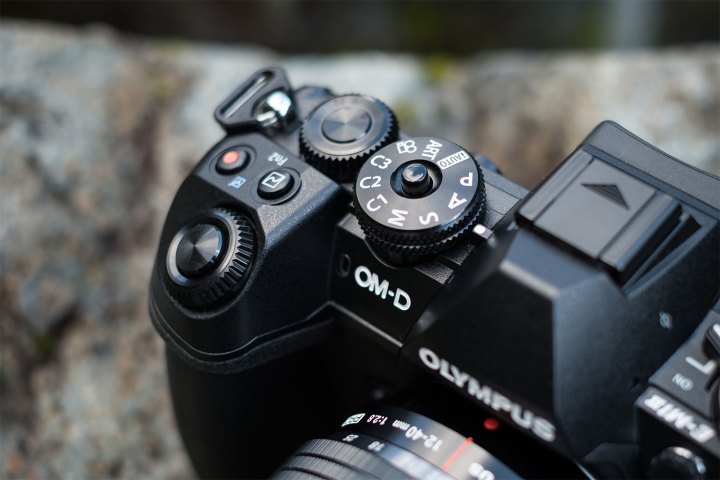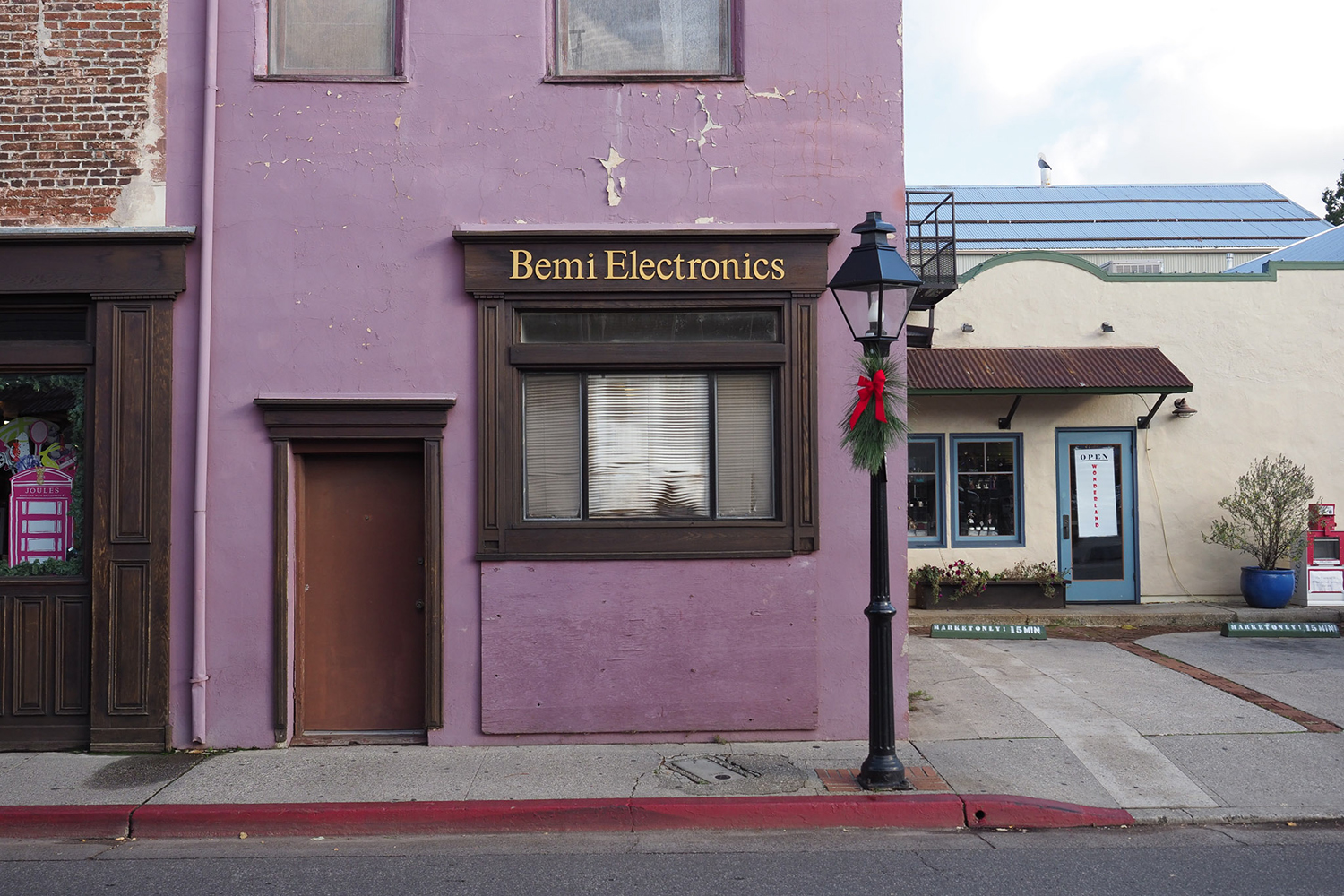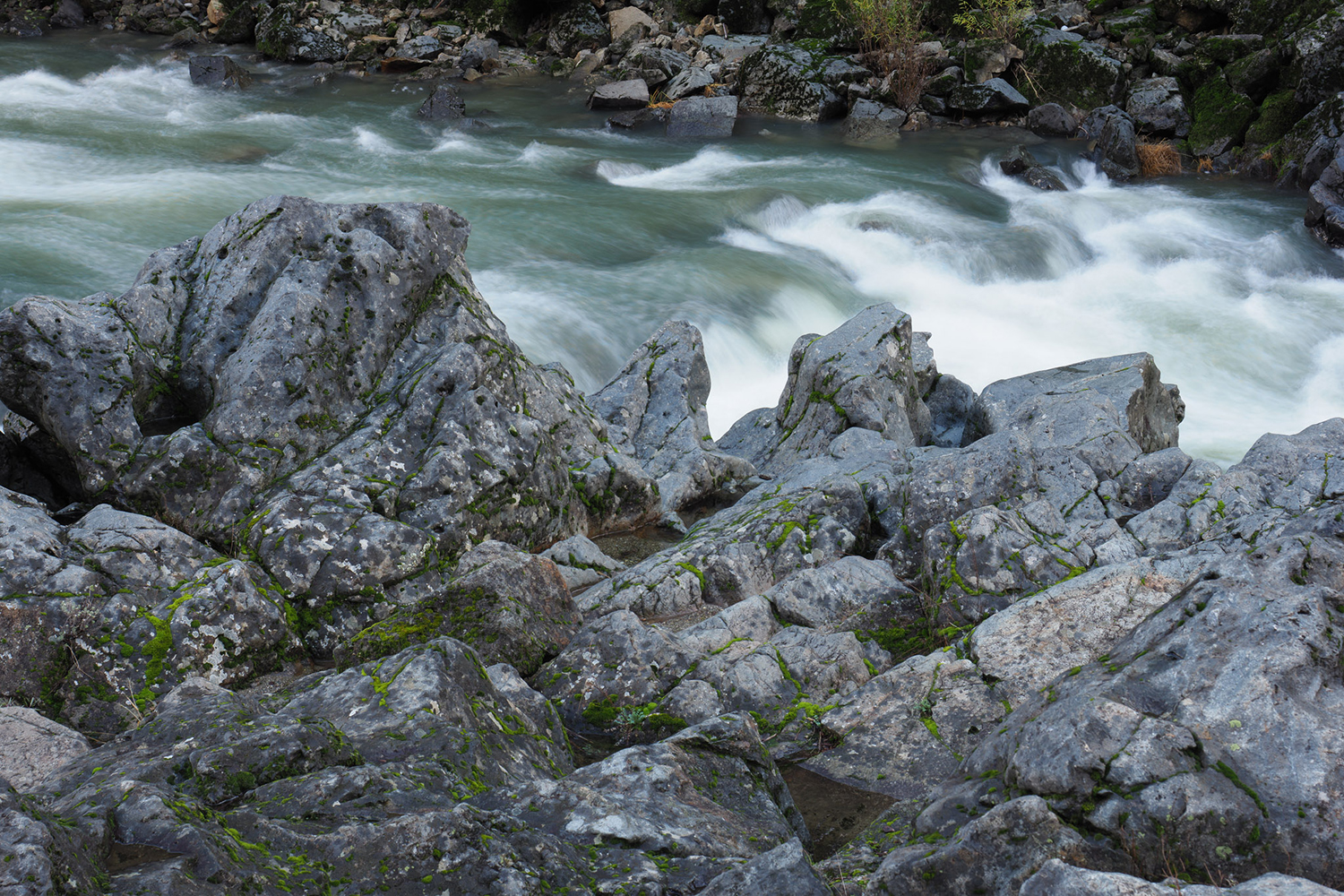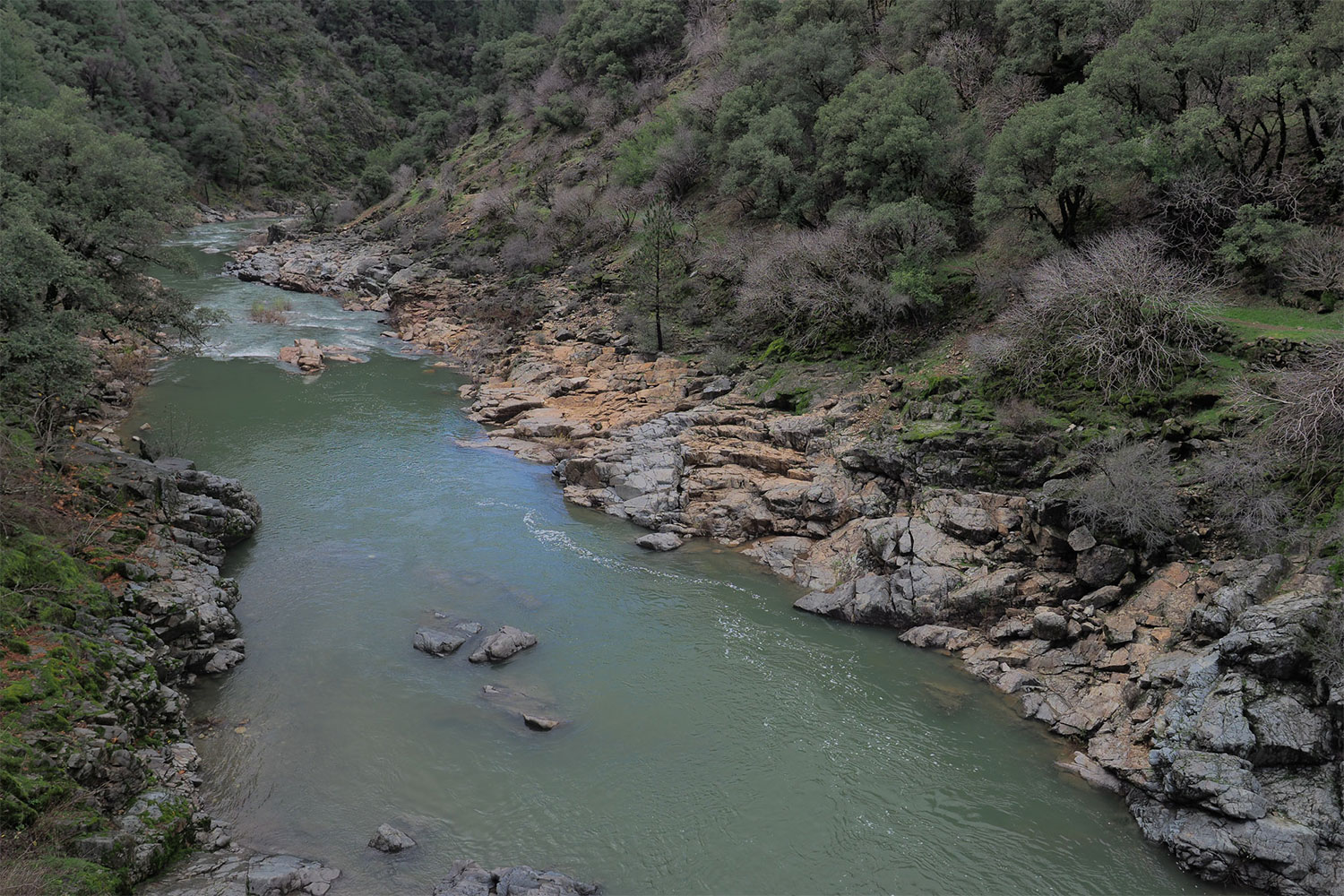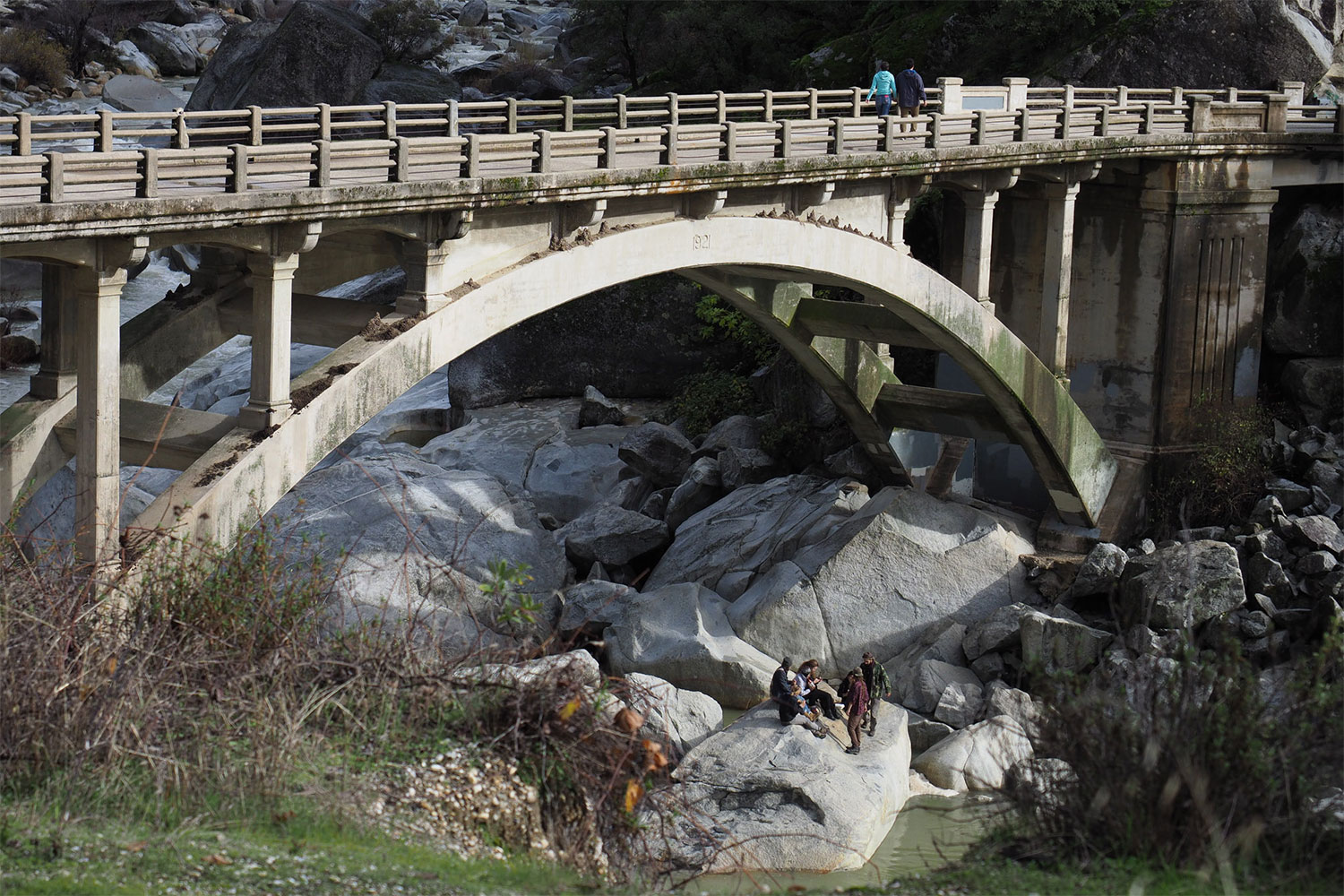- Great build quality
- Very fast performance
- Incredible in-body image stabilization
- Professional quality 4K video
- MFT format won’t meet needs of all photographers
- Expensive
Olympus’ original OM-D E-M1 was a proof of concept. The flagship mirrorless camera demonstrated that the mirrorless Micro Four Thirds (MFT) system could succeed with enthusiast and professional photographers despite the perceived disadvantages of its relatively small sensor. Three years later, Olympus is pushing even deeper into pro territory with the E-M1 Mark II, doubling down on performance and features while risking a $2,000 starting price – a new high for an MFT camera, which puts it neck-and-neck, pricing wise, with some full-frame rivals.
To justify that price, Olympus has taken a high-tech approach with the E-M1 Mark II, which the company hopes will give it an edge over the competition. Of course, the MFT format’s standard advantages of size and weight also apply here. Although, like its predecessor, the E-M1 Mark II is large for an MFT camera.
Design and built quality
There is little to be said here that hasn’t already been said about the rest of the OM-D series, but it bears repeating. This is an expertly built machine, fully weather-sealed with an ergonomic design and ample direct-access control. The layout is almost identical to that of the original E-M1, although a couple of buttons on the back have been shuffled around to make room for your finger to unlatch the LCD screen. The screen now articulates to the side, in addition to tilting up and down – a welcome update for videographers and, yes, selfie shooters. The resolution of the LCD screen and electronic viewfinder are unchanged, but still hold their own against the best modern rivals.
- 4. E-M1 Mark II
The dual command dials on the top of the camera are context sensitive, controlling both exposure settings as well as some functions accessed through the menu, such as selecting bracketing and drive modes. It’s a control paradigm shared by many modern cameras, but some photographers may prefer single-function dedicated dials, like those found on the retro-inspired Fujifilm X-T2.
In addition to the articulating monitor, the other most significant change in the body is the addition of a second SD card slot. High-speed UHS-II cards are supported in just a single slot, but pros will appreciate having a second card available as backup, overflow, or for splitting RAW and JPEG files.
An expertly built machine, fully weather-sealed with an ergonomic design and ample direct-access control.
Also worth mentioning is the new, higher-capacity BLH-1 battery. It offers a CIPA-rated life of 440 exposures, which is 90 more than the battery used in the original E-M1. This is still well below average for similarly priced DSLRs (the Nikon D500 offers over 1,200 shots on a single charge) but it’s a worthy improvement that should make pro users happy. Battery life can be doubled with the HLD-9 battery grip, which runs $250 (not including a second battery).
Our test camera came paired with the M. Zuiko 12-40mm f/2.8 PRO lens. This is certainly not the lightest combination for an MFT camera, but it is well balanced with the E-M1 Mark II. The lens offers a very usable 35mm-equivalent focal length of 24-80mm, and in a much smaller and lighter form factor than what you’d get with a full-frame DSLR. In 2018, we used the camera again to test Olympus’s new M.Zuiko F1.2 Pro lenses, which include a 17mm, 25mm, and 45mm (hit the links to read our reviews of those lenses). Those professional lenses are designed to be paired with a camera like the E-M1 Mark II.
One of the most intriguing aspects of the MFT system is the sheer range in camera sizes available. The E-M1 Mark II obviously won’t appeal to everyone, even before taking the price into account, but the design makes sense for professionals, especially those considering switching from a DSLR to mirrorless. And if those pros want a second camera for more casual applications (or for their spouse, child, etc.) that uses the same lenses, there are plenty of much smaller options available, like the Olympus PEN E-PL8. This type of flexibility just doesn’t exist to the same degree with larger sensor formats.
Performance
The exterior of the E-M1 Mark II may look all but unchanged from its predecessor, but don’t let that fool you: what’s on the inside is entirely new. This is Olympus’ most high-tech camera to date, with over three times the processing power of the original E-M1 thanks to a new, dual-core processor.
Continuous shooting has jumped to a maximum of 60 frames per second (fps) when using the electronic shutter and fixed focus and exposure. The camera can churn out a very respectable 18 fps with continuous AF and auto exposure between frames, again with the electronic shutter. The mechanical shutter tops out at 15 fps, but can’t perform continuous AF or auto exposure at that speed.
While accessing all of these various options can be somewhat complicated, the performance puts the E-M1 Mark II in league with sports-oriented DSLRs that cost over twice as much. Just know that if you do use the electronic shutter, images can suffer from the “rolling shutter” effect, where vertical lines will appear slanted when panning quickly.
Autofocus performance, already a strong point of the OM-D series, has also been improved. The Mark II features 121 hybrid AF points, up from 81 in the original E-M1. In casual use, we found the system to be one of the fastest we’d ever tested on any interchangeable lens camera, at least in daylight. As expected, it slowed down in dim lighting, but still performed admirably in most conditions. Shutter lag is also imperceptibly short, so capturing the right moment is easier than ever.
This is Olympus’ most high-tech camera to date, with over three times the processing power of the original E-M1.
And for particularly tricky subjects, the new Pro Capture Mode continuously buffers images at 60 fps, then saves 14 frames from before the shutter button was pressed, plus 25 after. This makes it easy to go back and pick the exact moment you want when shooting action.
One issue when shooting at 60 fps is that it can take some time for the buffer to clear, and you can’t review the photos until the last frame has been written to the card. We were using a 90-megabyte-per-second card; faster cards are available, which could potentially alleviate this issue.
For most photographers, being able to shoot at these insane burst rates is only the icing on the cake. Just about everyone, however, will benefit from the E-M1 Mark II’s redesigned five-axis stabilization system. Olympus already had some of the best sensor-shift stabilization out there, but the system on the E-M1 Mark II is now good for up to 5.5 stops of shake reduction (which is increased to 6.5 when using the 12-100mm stabilized lens).
To put this in perspective, 5.5 stops is the difference between a shutter speed of 1/125 of a second and roughly 1/3 of a second. Obviously, focal length and subject motion limit the minimum shutter speed you can actually use, but with a stationary subject, it is possible to take handheld shots with ridiculously slow shutter speeds. The stabilization is so good that you may mistakenly think you’ve hit the playback button; that’s how still the image can look through the viewfinder.
While stabilization is key for low-light scenes, it also opens up creative options in other situations. For example, we were able to shoot as low as 1/10 of a second to slightly blur water while keeping the surrounding rocks and landscape perfectly – or at least acceptably – sharp. It also came in handy for shooting video, but more on that later.
Image quality
The E-M1 Mark II is at the top of the food chain for MFT cameras. That still puts it slightly behind its APS-C competition (and clearly behind full-frame sensors), but it’s certainly not bad. The danger zones are high-ISO shooting, where the relatively small sensor records more noise, and fine patterns, where the lack of an antialiasing filter can lead to moiré. However, the superb stabilization means you may be able to keep ISO lower by decreasing shutter speed, and moiré can be avoided by using the superb High Resolution Shot mode – although the latter does require a tripod.
In this reviewer’s opinion, High Res Shot remains one of the main selling points of Olympus cameras. Even within the MFT format, it is a key differentiator between Olympus and other brands (namely, Panasonic). It produces 50MP JPEGs (or even larger RAW files) by taking eight separate exposures, moving the sensor a pixel’s width between each shot to record full color information at every pixel location plus additional spatial resolution. While not new to the OM-D series, the original E-M1 lacked this feature.
The output from High Res Shot is very good, rivaling full-frame DSLRs like Canon’s 50MP EOS 5DS R in terms of resolution. Travel and landscape photographers who already work with tripods owe it to themselves to consider the E-M1 Mark II for this reason (and the fact that they can save a lot of weight compared to a DSLR kit).
The camera also features built-in HDR, which uses the maximum burst rate to automatically fire off three shots at different exposure values. The frames are then merged into a tone-mapped high dynamic range image. For high-contrast landscapes, it made a big difference, but some scenes will actually look worse in HDR as it can lose the “drama” of deep shadows and bright highlights.
Video
This is the year that everyone fully embraced video, even brands not typically associated with it. Both Nikon and Fujifilm made the leap to 4K, and Olympus has now followed suit. The E-M1 Mark II is the first Olympus camera to shoot 4K video, and it offers both Ultra HD 3,840 x 2,160 and DCI 4,096 by 2,160 resolutions. Maximum bit rate is an impressive 237 megabits per second in Cinema 4K mode, and the camera can output a clean, 8-bit 4:2:2 signal over HDMI that is suitable for external recording. The camera also has built-in microphone and headphone jacks.
While 4K can be recorded at a maximum of 30p, Full HD 1080 goes up to 60p. We would have liked to see higher Full HD frame rates for super slow motion, but these specs certainly aren’t bad. Cinema purists will appreciate that 24p is also available (and necessitated by the DCI standard) and you can actually set a shutter speed of 1/48 second to accurately mimic a 180-degree shutter angle used on cinema film cameras. For advanced tweaking, Olympus didn’t go quite so far as to include a logarithmic gamma profile, but you can manually set a tone curve to lower contrast as much as possible.
Again, the five-axis stabilization system is fantastic in video mode. It can also be combined with electronic stabilization for even greater effect, although some cropping and loss of detail occurs in this mode. In our experience, sticking with just sensor-shift stabilization worked very well.
By a fair margin, this is the best video mode to ever grace an Olympus camera. It may not be enough to woo diehard Sony and Panasonic fans, but it comes close. For all save the most demanding users, the E-M1 Mark II is nearly as capable a video camera as it is a still camera.
Our Take
The OM-D E-M1 Mark II is arguably the best Micro Four Thirds camera on the market today. All eyes are now on Panasonic and the upcoming GH5, but at least for the still photographer, the E-M1 Mark II is going to be hard to beat. This is an incredibly full-featured camera that combines excellent design and high-tech performance. The shooting experience is second to none. If there’s anything that holds the E-M1 Mark II back, it’s the inherent disadvantages of the MFT format itself.
Are there better alternatives?
At $2,000 (body only), the E-M1 Mark II has some very stiff competition. Photographers willing to spend this much money on a camera may be given pause by the perceived shortcomings of MFT sensors compared to larger formats (increased noise, less dynamic range, less control over depth of field). At $2,000 you are entering full-frame territory, so the E-M1 Mark II isn’t just pitted against high-end APS-C systems as most MFT cameras historically were.
The Sony A7 II and Nikon D750 are both full-frame cameras that currently sell for well under $2,000 thanks to instant rebates. Without taking into account the E-M1 Mark II’s HDR and High Res Shot modes, either of these full-frame options will offer superior still image quality, especially at high ISOs, although the video modes in these particular models lag significantly behind the Olympus.
The latest APS-C mirrorless cameras, like the Fujifilm X-T2 and Sony’s upcoming A6500, also offer solid competition at lower prices.
However, we are unaware of any other camera (full-frame or otherwise) that can match the E-M1 Mark II’s broad feature set. It is an incredibly flexible camera. If you’re willing to put in a little extra effort, it can even overcome its shortcomings thanks to HDR and High Res Shot modes. And, naturally, it has a huge size advantage over the full-frame competition.
How long will it last?
It has been over three years since Olympus introduced the E-M1, and we have no reason to doubt the Mark II will endure just as long, especially if Olympus plans to update it with firmware upgrades, which it has done with previous OM-D models. It is a much better machine than what Olympus has already introduced, thanks to an overhauled video mode, and offers more than enough performance for most shooters.
Should you buy it?
Yes, if you don’t balk at the price and don’t need the advantages of a full-frame sensor. For E-M1 shooters, the Mark II represents a significant upgrade, especially if you’ve been waiting for Olympus to introduce a strong video mode. In that case, it’s a no-brainer.
However, for many people, that’s a big “if.” If you’re not in dire need of a new camera body, you could easily put this purchase off for a year and look for the price to decrease. As compelling as the E-M1 Mark II is today, it probably doesn’t make sense for a lot of photographers to run out and drop two-grand on it right away.
But for those who can afford it, the OM-D E-M1 Mark II presents an impressive one-camera-fits-all solution. It is a true hybrid still and video creative machine that can handle a wide variety of assignments. Beyond that, it is well made and comes with an excellent lens ecosystem. We wouldn’t hesitate to recommend it.
Updated on February 13, 2018: We added info about using the camera with Olympus’s new M.Zuiko F1.2 Pro lenses. This article was originally published on November 29, 2016.


